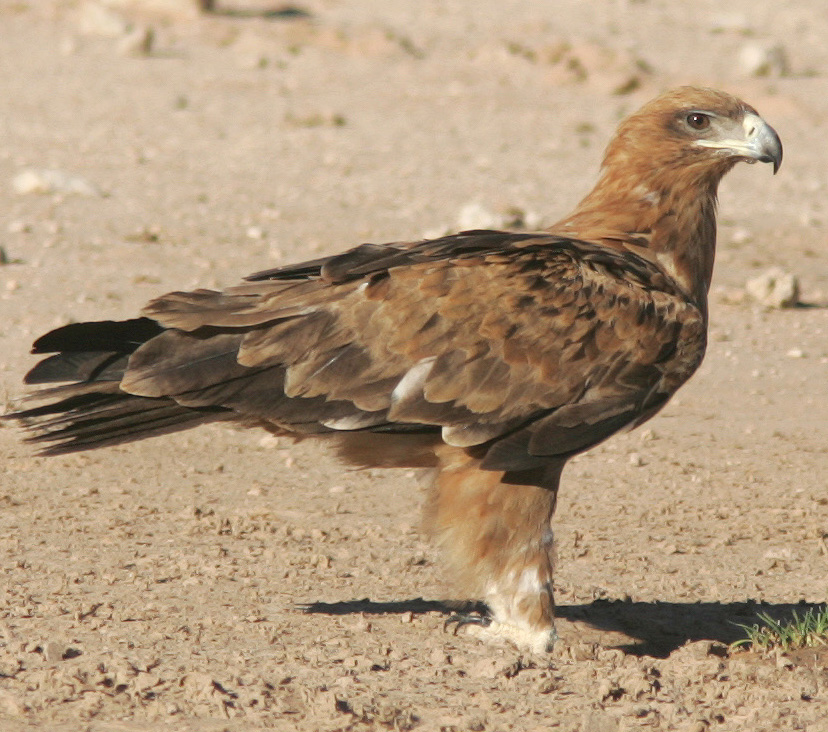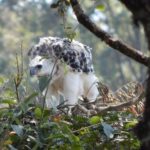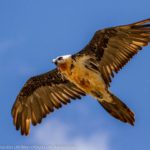New interview with Bill Clark and Rob Davies about their new book “African Raptors”
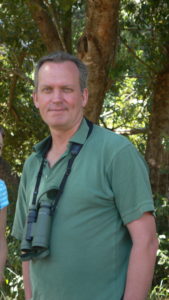
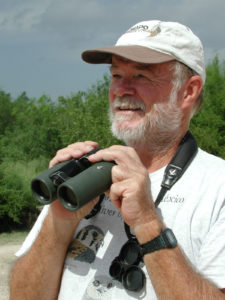
Bill Clark is one of the leading experts on raptor identification world-wide. He has published field guides for North America, the Western Palearctic and recently the wonderful guide Raptors of Mexico and Central America together with the bird artist John Schmitt.
Now he has teamed up with Rob Davies to produce an fantastic new field guide called African Raptors. It covers all raptors that can be seen in Africa – from the Mediterranean coast to South Africa. The new book shows all raptors with wonderful artwork painted by Rob and a very detailed text describing all the plumages known for each species. In addition, the book contains many great photographs and basic information on distribution, ecology and conservation.
I was lucky enough to travel with Bill both to South Africa and to Belize (both in 2012) where he already showed plates of his upcoming books. I couldn’t wait to get his books and now we have a wonderful new field guide to the raptors of Africa.
Rob Davies is an amazing artist and the plates are among the best I’ve seen. The raptors in his plates look real and alive. They draw you in and it is hard to put the book aside because you want to keep on enjoying the amazing artwork.
This book is not Rob’s only impressive piece of art; he has also painted the line drawings in the classic book about the African Black Eagle (Verreaux’s Eagle) The Black Eagle: A Study by Valerie Gargett.
Make sure to also read The Verreaux’s Eagle – an interview with Dr Rob Davies.
If you like Rob’s artwork, you can find more information, including how to order prints, at this website: www.rookwoodstudios.com/artwork
To protect birds, you first have to recognize and identify them, a task not always easy with distant, rare and shy birds like many raptors. Rob and Bill have produced a truly amazing book and it’s value for birders, but also for researchers and conservationists, cannot be overstated.
In this interview, Bill and Rob talk about the book, identifying raptors and much more.
How long have you been watching raptors?
Bill: More than 50 Years.
Rob: 46 years!!!
How did you approach such a huge task like an identification guide for all of Africa?
Bill: I first thought about writing such a guide when I went to Kenya with an Israeli tour in late 1980’s. I was at that time writing my European raptor guide (Oxford U Press). As half of the raptors that occur in Africa also occur in the Western Palearctic, I was half-way there.
Originally, another artist was signed up to do the illustrations, but he is a Prima Donna and refused to just illustrate juveniles on the last plate of vagrants, so he quit. But I had met Rob in the meantime and was very impressed with his pen and ink drawings in Val Gargett’s book, Black Eagle. So, at my behest, my editor contacted him with an offer, and the rest is history. Fortunately.
Rob: Painting 52 plates was rather like running a marathon: don’t try to see the end but the smaller accomplishments along the way. It took a bit of stamina!
What are the hardest species to identify?
Bill: Separating juvenile Dark and Eastern Chanting Goshawks, and adult Chestnut-flanked Sparrowhawks from Red-chested Goshawks.
Rob: Buzzards: Common, Steppe, Mountain and Forest all look so similar and all are so variable. I got fairly fed up painting shades of brown!
How difficult are hybrids, for example between Lesser and Greater Spotted Eagles?
Bill: We did not consider hybrids for ID, only reported published cases. They are very difficult.
How should beginning bird watchers approach raptor identification?
Bill: With some background research, especially studying the raptor guides and watching videos of raptors.
Rob: Start with groups, tell apart eagles from vultures, from buzzards, from harriers, from hawks, from falcons from kestrels first. Raptor groups are relatively easy to tell apart and get some confidence then go on to the finer details that separate species.
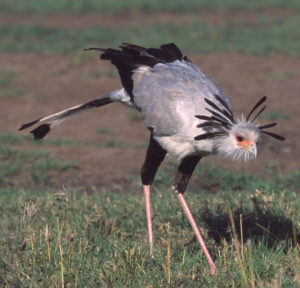
Which equipment do you recommend for watching raptors?
Bill: Good quality binoculars, with a good scope optional, latter more important for watching raptor migration and other distant raptors.
Rob: A good pair of binos, I prefer 8.5 x 45 or thereabouts, a good fieldguide (hopefully there is a reasonable one now!) and a good knowledgeable friend.
How did you approach drawing the beautiful plates?
Bill: As we discussed in the Intro, I sent Rob a list of figures for each plate, suggesting which figures perched, flying, or soaring. Rob added in some behaviors, as well as suggesting changes to my request. He then prepared a pencil sketch of the plate so that I could get a feel for the plate and check wing shapes, which I deem most important. Rob then made any changes suggested changes to the outlines and painted in the plumages. The beauty was all due to Rob’s talent.
Rob: Thank you Markus. It was quite a process. It would start with a list from Bill of all the variants and postures he would want to see for a species or two. I would work these up in pencil and then pen and ink and then scan them so that I could adjust size and position to achieve a nice composition. I would try to check with Bill that we had all the shapes and proportions correct in this black and white form so that then I only had to get the colours right theoretically! I used really nice Whatman watercolour paper and traced over the pen and ink outlines in a hard pencil and then soaked and stretched the water-colour paper onto a board. This produces a really nice surface to absorb the paint. I did the habitat sketches or colour washes first to get them out the way. You would not want a disaster in these at the end and better to scrap and try again early on to get the background right. I chose some of my favourite places in Africa to give a sense of where the birds live. I used a mid tone first and then darks but mixed gouache with the water-colour which meant I could then add whites and highlights over the darker colours. This gives a more 3-d tonal effect which is better for repro than letting the white of the paper come through with traditional water-colour. When the paintings were finished I sent scans to Bill and we often did one last iteration of minor changes. Each plate took about 6 weeks work full-time.
What is still missing in our knowledge of African raptor identification?
Bill: Can’t think of anything.
Rob: There was scant photo information on some species at the outset of our project. I couldn’t find any decent photos of Cassin’s Hawk-eagles for instance but because the project spanned so many years during which digital photography came to the fore amazing photographic coverage of nearly all species became available during the lifetime of the project which helped enormously in illustrating the rare species correctly. finer details still need to be documented for telling subspecies apart. The GRIN apps can then log sightings to subspecies level..
How important is knowledge about the ecology of raptors for identification?
Bill: Knowledge of behaviors can be helpful for separating raptors, and knowing which raptors are in which habitats helps eliminate some species.
Rob: Ecology and habitat selection provide a lot of clues to what species are likely to be seen where. Open habitats are relatively easy and surrender up their raptors on top of isolated trees but forest raptors are notoriously difficult because of cover and cryptic behaviour. Knowing what to look for does help a lot and sometimes you can develop a sixth sense of what you are likely to see next. Also some behaviours can rule out particular species or indicate others. However this knowledge should not rule out all possibilities because raptors do not read the same books, they are extraordinarily mobile and they can always surprise us.
What is the African Raptor Databank and how can bird watchers and researchers contribute?
Rob: A live data observatory on African raptors. It uses mobile apps to bring in observations from all over Africa so we understand where the species still live and we built models to work out how much habitat space they have left. Data gathering was complete last October (2017) but the project lives on in the form of the global GRIN project managed by The Peregrine Fund. You only need an Android or Apple smartphone and the GRIN app may be downloaded for free. Get logging those raptors. We need the info!
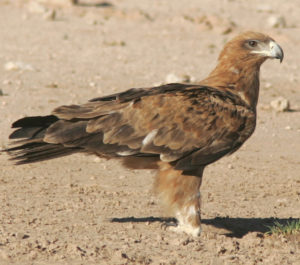
What are your favourite places for watching raptors in Africa?
Bill: There are just too many great places to watch raptors in Africa to pick a favorite. I’ve enjoyed them all.
Rob: Kalahari, Nossob riverbed, Kannaguas waterhole.
Lake Naivasha, Kenya.
Nuweveld escarpment, Karoo.
What was the hardest species to find?
Bill: Several species were hard to find. I still have not seen a Chestnut-flanked Sparrowhawk or Ethiopian Goshawk. I have only seen Cassin’s Hawk-Eagle and Congo Serpent Eagle once each. Other hard-to-find species to find are Crested Honey-buzzard, Levant Sparrowhawk, and Taita Falcon.
Rob: Cassin’s Hawk-eagle, this forest species eluded my best efforts!
What was your most amazing experience with African raptors?
Bill: I once watched a pair of adult Tawny Eagles soaring, presumably over their territory. Another adult flew close to them, when the larger female of the pair attacked it, the intruder rolled over and they grasped talons, falling quite a bit before they disengaged. The male of the pair then attacked the intruder, which was its size and apparently another male, and they also grasped talons and fell, almost to the ground. The intruder then made a hasty exit from the area, with the pair then circling up again.
I also watched a Gabar Goshawk adult chase a small bird and miss catching it several times, when the passerine started flying upward. The Gabar then flew to a perch, but an adult Red-necked Falcon took up pursuit of the small bird, following it up quite high, then it dove, as the small bird started coming to ground. The Gabar did not get the small bird as it came close to the ground, but an adult Pale Chanting Goshawk did.
Rob: In this project it was watching Bearded Vultures fly in the Drakensberg and looking for them in the Cherangani Hills in Kenya

